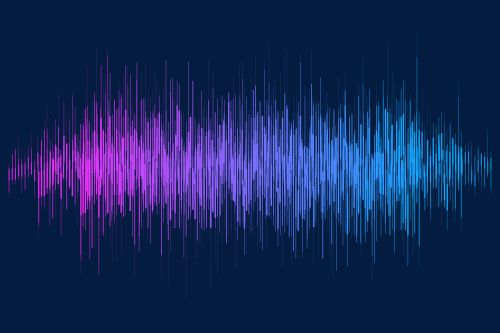For some businesses, a logo or slogan is how consumers recognize the brand. For other companies, a distinctive sound might be the way consumers identify the source of the goods or services — rather than through visual means. If a sound is what distinguishes your brand from the competition, you may be wondering if it’s possible to trademark a sound. It’s important to understand that you may be able to protect it by registering it as a trademark with the United States Patent and Trademark Office (USPTO).
When Can You Trademark a Sound?
A sound mark is a source indicator that distinguishes a company’s goods or services from that of others by audio means. The USPTO has specific guidelines when it comes to registering a trademark for a sound. Under Section 1202.15 of the Trademark Manual of Examining Procedure, a sound mark can function as the indicator of the source of goods or services when it assumes “a definitive shape or arrangement.” It must also create an association between the sound and the goods or services in the hearer’s mind. Just like a logo, phrase, slogan, or design, a sound can be registered on the Principal Register when it is “arbitrary, unique, or distinctive.”
What Types of Sounds Cannot Be Trademarked?
If you are considering attempting to trademark a sound, it’s essential to understand what types of sounds cannot be trademarked to avoid the potential for refusal and any delay in processing your application. Notably, sounds that are considered commonplace, functional, or generic do not qualify for trademark protection. The USPTO differentiates between distinctive sounds and those that imitate sounds to which a listener may have heard under different circumstances that lack brand association. For instance, an alarm clock or a bird chirping would be deemed generic sounds that are not eligible for a trademark.
While a sound must be unique and different, it doesn’t have to be a jingle or a theme song to obtain federal trademark protection. Copyright protection would typically be used to safeguard original music works and compositions, rather than a trademark. However, if your sound has secondary meaning in the marketplace and is used to help consumers identify your brand, trademark protection is likely the vehicle that should be used — and it can offer crucial advantages for your business.
Examples of Sound Trademarks
Some of most well-known trademarks are sounds — such as the Pillsbury Doughboy’s giggle and the Aflac quack. When a consumer hears one of these sounds, they immediately associate it with the corresponding company. Other trademarked sounds that are instantly recognizable to consumers as a brand identifier include:
- Homer Simpson’s “D’oh!” sound
- Tarzan’s yell
- Lightsaber sound
- Darth Vader’s breathing
- The Taco Bell bell sound
- AOL’s “You’ve Got Mail”
- The NBC chimes
- Twentieth Century Fox’s cat’s meow
- McDonald’s “I’m lovin’ it”
Trademarking a sound might seem relatively straightforward when you consider the instant recognition that comes with the above sounds. However, keep in mind that just because a sound is tied to a brand doesn’t mean it will pass muster. For example, despite the uniqueness of Harley-Davidson’s V-twin engine idle sound, the company dropped its application after an unsuccessful six-year effort of seeking trademark protection.
How to Trademark a Sound
Obtaining a sound trademark isn’t necessarily as easy as securing one for a logo, word, design, or image. But you must still go through the same registration process you would with any other type of trademark. You will need to complete an application and file it with the USPTO. An examining attorney will review it to determine whether the sound is distinctive and satisfies the necessary criteria for registration.
Just as you would need to provide a specimen for a visual trademark, when filing for a sound trademark, you must submit an audio file of the precise sound you seek to protect. The USPTO has specific rules when it comes to the type of format and size of an audio file that must be provided. In addition, a detailed description of the sound must be included in your application and you must show how it is used in connection with the product or service.
To secure trademark protection for a sound, you must demonstrate to the USPTO that the sound trademark has been used in commerce. You may also be able to submit your application on an intent-to-use basis if the mark has not yet been used in commerce, but you have a good faith intention to do so in the future. Filing an application based on the intent-to-use basis can allow you to have an earlier filing date and give you a strategic business advantage over a possible competitor.
Contact an Experienced Trademark Attorney
The process of filing for a sound trademark can be complex and it is critical to have a skillful trademark attorney who can guide you through the registration process. Located in Ann Arbor, Michigan, the Trademark Lawyer Law Firm, PLLC offers a variety of trademark services to business owners in many industries nationwide. With a track record of successfully registering more than 6,500 trademarks with the USPTO, we are committed to providing our clients with high-quality legal services at reasonable rates. Contact us today to schedule a complimentary 15-minute consultation with a trademark attorney to learn how we can help.





